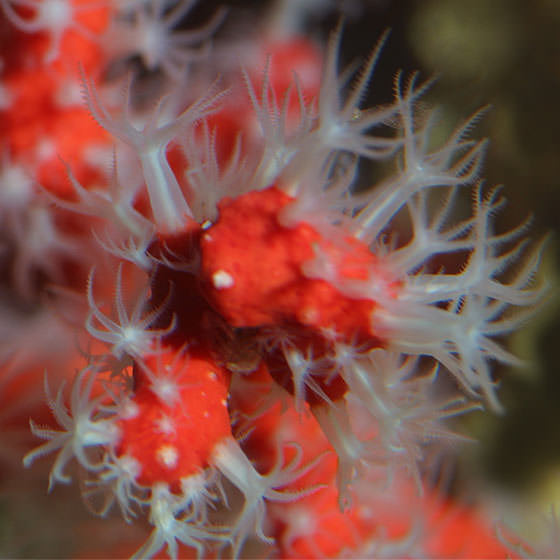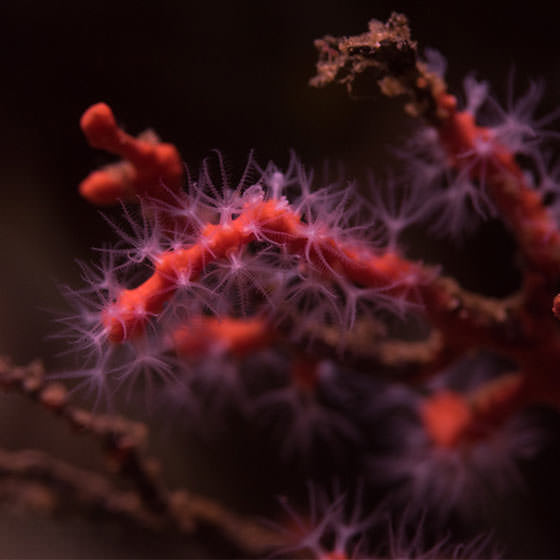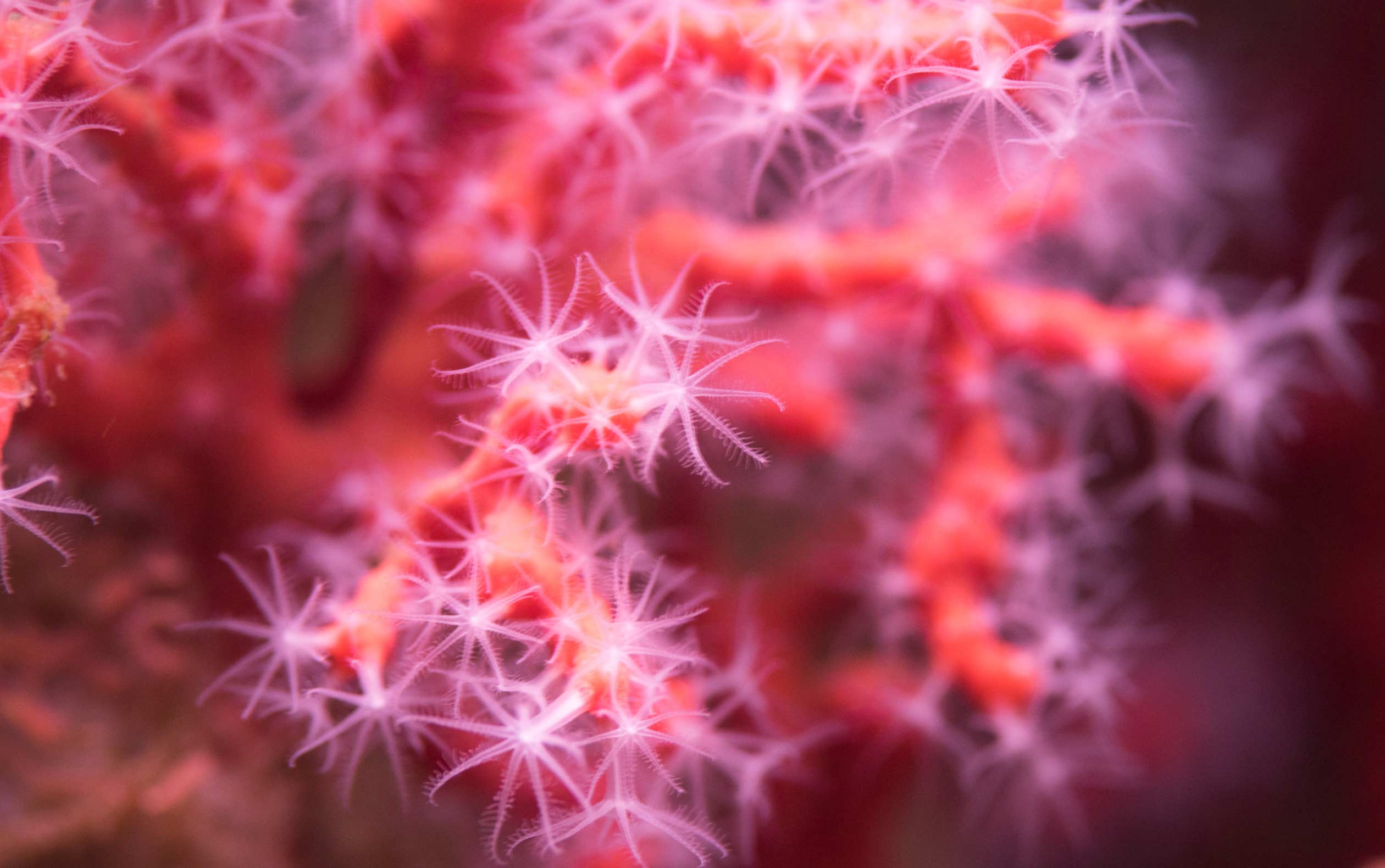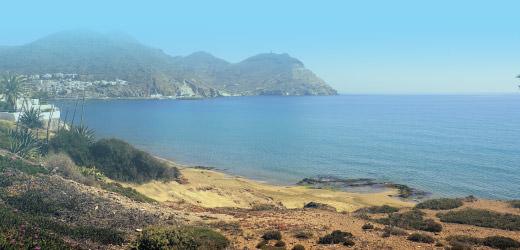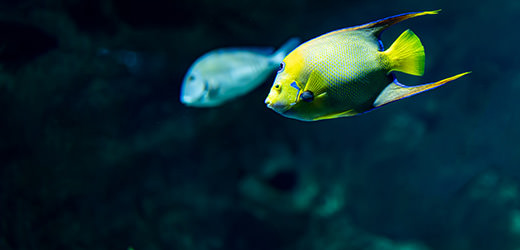Biology and reproduction
Red coral is a colony of animals, or polyps, structured similarly to sea anemones: a sort of sack with an orifice surrounded by eight tentacles.
The white polyps build a hard exoskeleton whose red colour comes from iron salt, and into which they can retreat when needed. Red coral is a passive filter feeder. Its very tight network of polyp tentacles captures food particles (plankton, inert organic matter, etc.).
It reproduces between spring and summer. Its colonies can be male, female or mixed. Fertilization occurs inside the ovary, producing larvae that are expelled through the polyp’s mouth and scattered by the currents. Each larva attaches to a rock, where it grows into a polyp. The polyps multiply through successive budding. The speed of growth of red coral varies depending on its location and food supply, although it is always relatively slow. A branched colony grows at a rate of 8 mm each year. A colony weighing just a few grams can be as old as 20 years.
